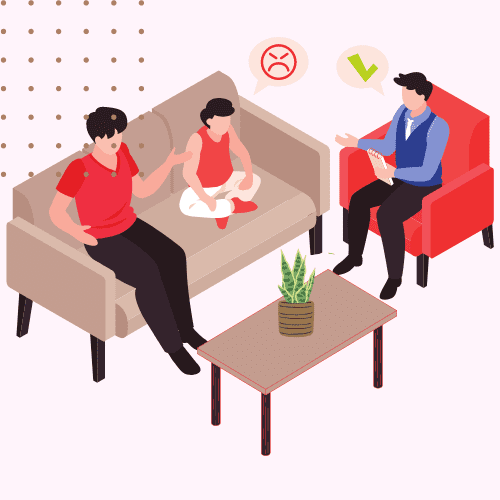Personal Space Test
3 Min Free Personal Space Test

We foster a nurturing environment where your voice can thrive!
WHAT TO KNOW?
What is a Personal Space Test in Relationship?
A Personal Space Test in a relationship refers to a situation or scenario where one partner intentionally creates distance or boundaries to gauge the other partner’s respect for personal space. It can involve activities such as spending time apart, pursuing individual hobbies, or maintaining privacy. This test helps assess the level of understanding and respect for each other’s need for independence and boundaries within the relationship.
This is what the symptoms of Poor Personal Space in Relationship can look like...
- One partner consistently invades the other’s personal space
- Constant intrusion into each other’s personal space
- One partner excessively clings to the other
- Lack of consideration for each other’s need for personal time
- One partner consistently borrows belongings without asking
- Constant crossing of emotional boundaries
- Consistently oversteps social boundaries
- Find it difficult to express their personal preferences

WHO ALL CAN BENEFIT?
Who can derive advantages from this assessment of Personal Space Test in Relationship?
Anyone who is currently in a relationship or about to enter one can derive advantages from assessing personal space in their relationship. By recognizing the symptoms of poor personal space outlined in the assessment, individuals can gain insights into their own behavior or their partner’s behavior. This awareness can help foster healthier boundaries, improve communication, and promote mutual respect, leading to a more satisfying and fulfilling relationship experience.
Types of Assessment to Measure Personal Space in Relationship
Self-report questionnaires
Participants answer a series of questions about their perceptions, preferences, and experiences regarding personal space in the relationship.
Attachment style assessments
Understanding attachment styles can provide insights into how individuals navigate personal space and boundaries within relationships.
Personal space inventories
Participants provide information about their personal space needs, boundaries, and preferences through structured inventories.
Behavioral coding
Researchers analyze specific behaviors related to personal space, such as physical proximity, touch, or invasion of boundaries, using coding systems.
Implicit association tests (IAT)
These tests measure automatic associations and biases related to personal space by assessing reaction times to various stimuli or scenarios.
Relationship satisfaction scales
These scales measure overall satisfaction within the relationship and can indirectly reflect the presence or absence of healthy personal space.
Handling Personal Space Issues in Relationship
Handling personal space issues in a relationship requires open communication, mutual respect, and a willingness to establish and honor boundaries. Here are some strategies for addressing and managing personal space issues:
- Reflect on your own needs: Understand and identify your own personal space needs, preferences, and boundaries. This self-awareness will help you communicate them effectively to your partner.
- Communicate openly: Have an open and honest conversation with your partner about personal space. Express your feelings, concerns, and needs, and actively listen to their perspective as well.
- Set clear boundaries: Clearly define and communicate your boundaries regarding physical space, alone time, privacy, and personal belongings. Discuss and negotiate boundaries together to find a compromise that respects both partners’ needs.
- Practice active listening: Give your partner space to express their thoughts and feelings about personal space. Listen attentively without judgment, seeking to understand their perspective and concerns.
- Find common ground: Look for shared values and common needs related to personal space. Find areas where you can both compromise and respect each other’s boundaries.
- Respect each other’s autonomy: Recognize and respect your partner’s individuality and autonomy. Allow them to make their own decisions and have their own personal time and interests.
- Seek professional help if needed: If personal space issues persist or cause significant distress, consider seeking the guidance of a couples therapist or relationship counselor. They can provide insights, strategies, and mediation to address personal space challenges.
- Practice empathy and understanding: Try to understand your partner’s perspective and emotions regarding personal space. Empathize with their needs and concerns, and be willing to make adjustments where necessary.
- Create shared spaces and activities: Foster a balance between personal space and shared experiences. Create opportunities for quality time together while also respecting the need for individual time and space.
- Continuously reassess and adjust: Personal space needs may evolve over time, so regularly check in with your partner to reassess boundaries and make adjustments as needed.
Remember, navigating personal space in a relationship is an ongoing process that requires open communication, compromise, and respect. By actively addressing and managing personal space issues, you can create a healthier and more fulfilling relationship for both partners.

